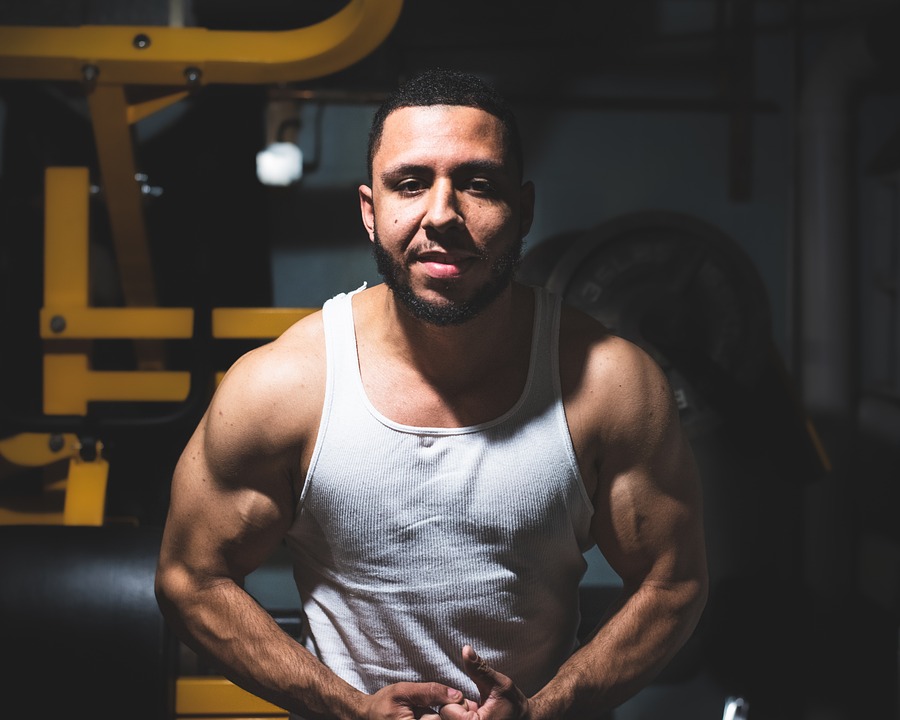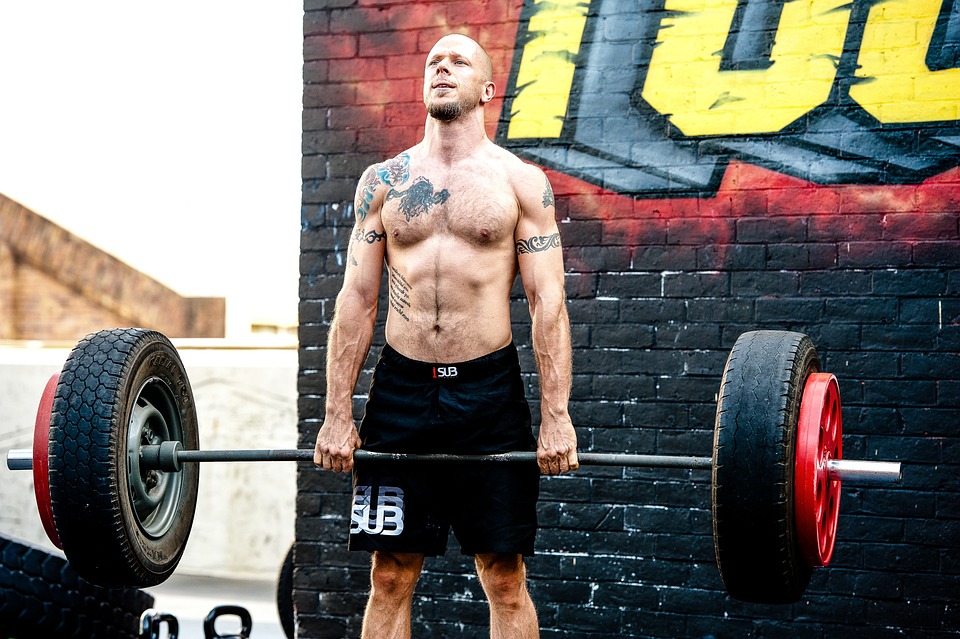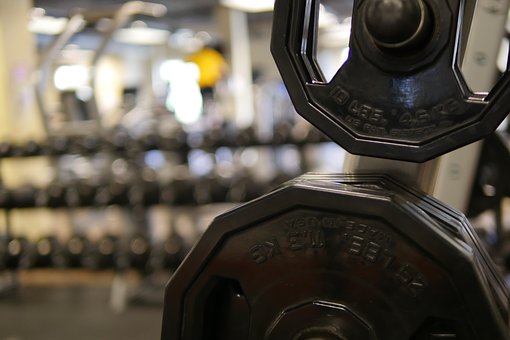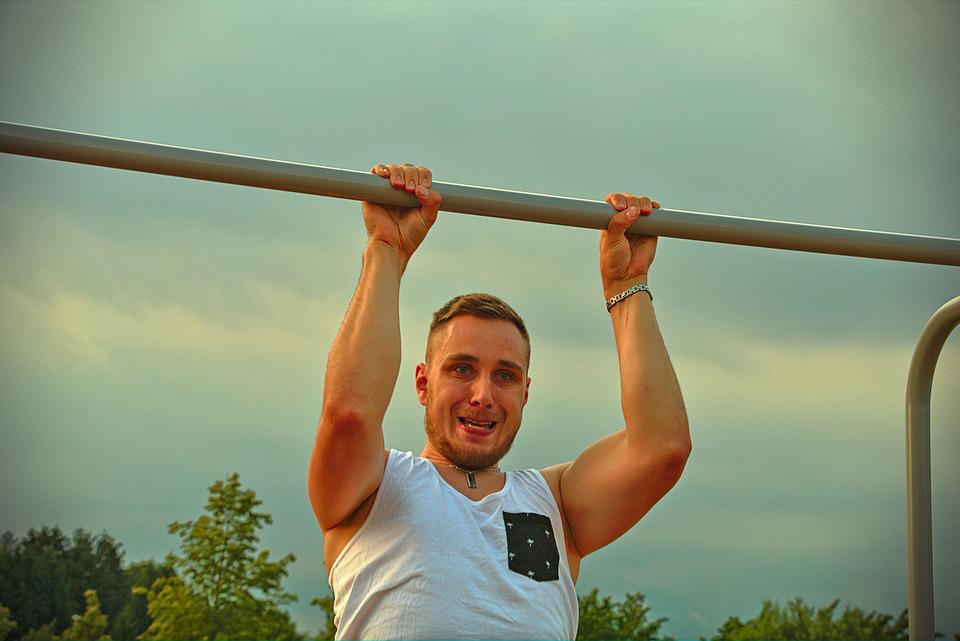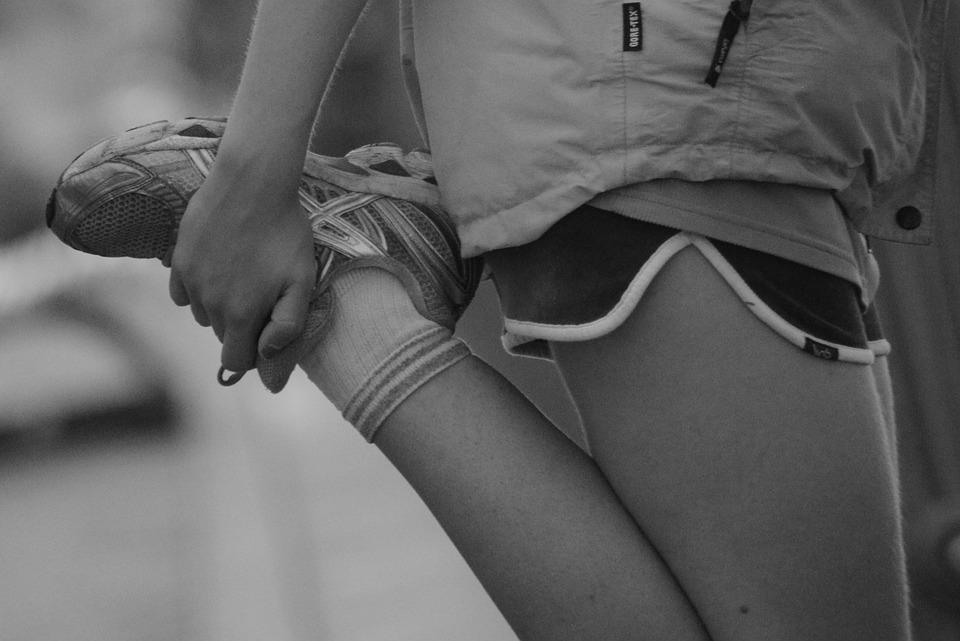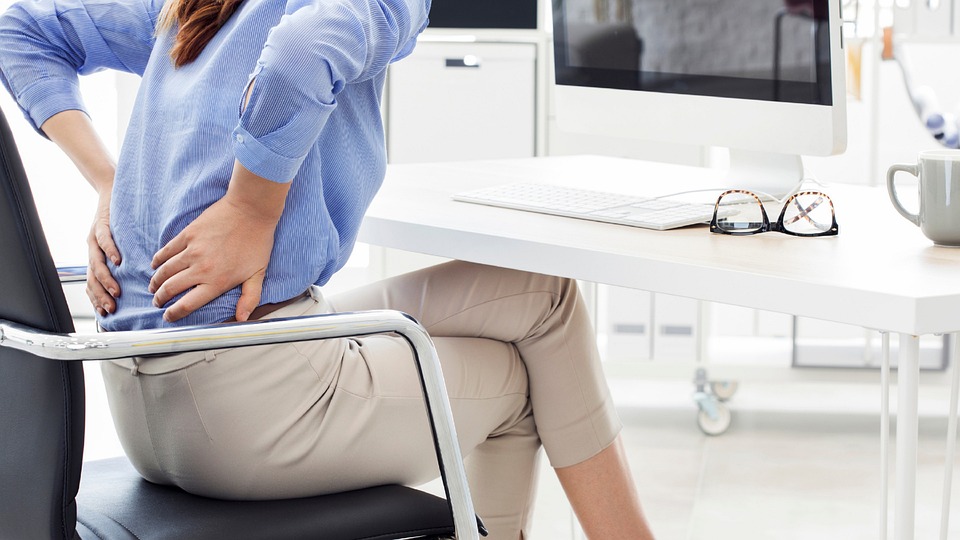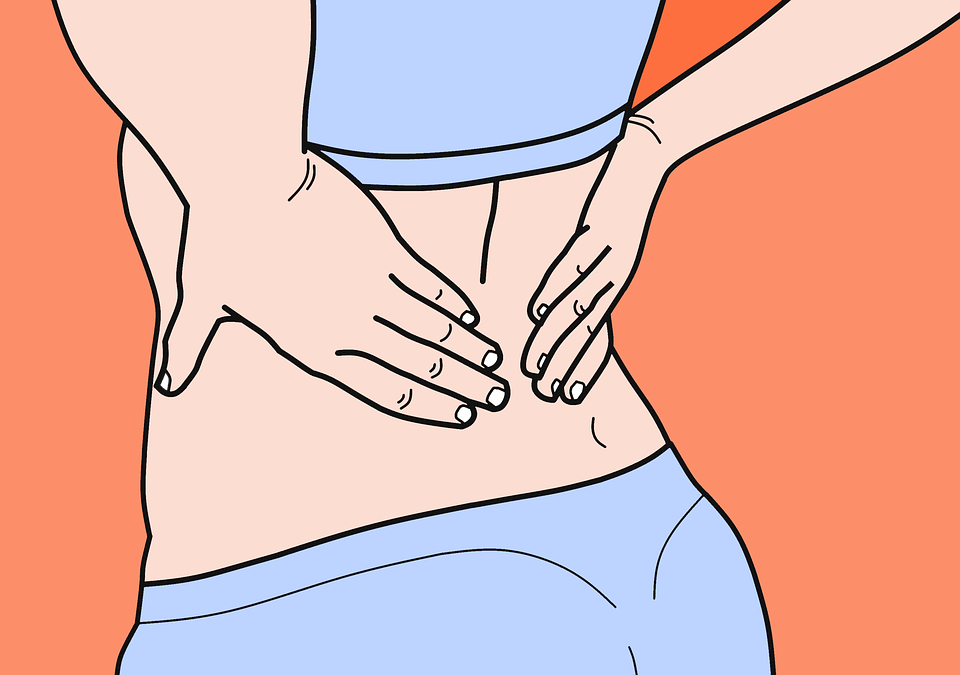
When considering the back, the lats and the muscles in the upper region receive the majority of attention, and they deserve it. They give a considerable measure of structure and backing for your spine. However, you can’t forget about your lower back muscles. Chunky, toned spine erectors may not appear as attractive as packed, expansive back muscles — but fortitude in the lower back forms the groundwork for the majority of upper and lower body movements. It will be possible for you to lift more weight when doing squats and deadlifts, as well as producing greater force and speed of movement and rotation.
Listed below are the finest workouts for the lower back that are geared to conditioning the major muscle groups in the butt, hamstrings, back area, and upper back.
Rack Pull
The rack pull is like a standard deadlift but it works out all of your erector spinae, lower back, mid-back, and upper back muscles. Rack pulls involve partial movements of the arm, with the bar starting near the top or bottom of the knee. Since you start from a higher position, it is simpler to keep your back in a neutral posture while you lift. This deadlift variation makes it possible to lift more, which gives your body the opportunity to become used to lifting heavier objects, thereby augmenting your strength.
Benefits of the Rack Pull
- Due to lifting from a partial range of motion and moving more weight, you’ll strengthen your deadlift lockout.
- Improves your grip strength and upper back strength.
- Helps improve your regular deadlifts
How to Do the Rack Pull
Place the barbell on the squat rack either above or beneath your knees. Assume your standard deadlift stance and grip. Hinge down and grip the barbell with an overhand shoulder-width grip and squeeze your armpits together, keep your chest up and shoulders back and pull up until lockout, finishing with your glutes. Hinge back to the starting position and repeat.
Bent Over Row
The bent-over row is a great way to build and develop the muscles of the upper back and latissimus dorsi, as well as reinforce hip joint mechanics. While you are bowed for the period it takes to complete the exercise, the muscles of your lower back, sometimes referred to as the erector spinae, will be fighting to resist the motion and maintain a straight posture in your spine. This will aid in enhancing your lower back stamina.
Benefits of the Barbell Bent Over Row
- Adds strength and mass to your upper back, lats, and erector spinae
- Reinforces good hip hinge mechanic, which will have a direct carryover to your deadlift.
- Improves postural strength and control.
How to Do the Bent Over Row
Bend down at the hips and grasp a barbell loaded with weight, with a hold that is slightly wider than the width of your shoulders. Bring your shoulder blades close and tug the barbell until it reaches your abdomen. Your arms should form an approximately 45-degree angle during the exercise. Maintain the highest point at the pinnacle of the line for a few seconds and then gradually reduce the weight again downwards.
Barbell Good Morning
The barbell good morning is an ideal lift for strengthening the lower back, gluteal muscles, and hamstrings. In the event that shoulder mobility or back pain is an issue, it is advisable to try a different exercise. It is important to start each morning with only slight effort before gradually increasing the intensity and the scope of movement. Once a person has become proficient in it, this exercise is great for strengthening and developing the muscles in the back of the body.
Benefits of the Barbell Good Morning
- Fantastic exercise for spinal erector and glute strength and hypertrophy.
- Great engagement of the entire posterior chain and all the spinal stabilizers that help prevent spinal flexion. This move is purely a hinge, and your lower back will is what will drive that hinge.
How to Do the Barbell Good Morning
Move underneath the barbell that is placed in a strength rack that is loaded with weight. Position yourself in the same way as you would if doing a back squat, and take a few steps back. Bend your knees slightly, then move your hips back while keeping your upper body in an upright position and your shoulders still until your torso is nearly parallel to the ground. Contract your glutes and hamstrings to raise your body back up to a standing position.
Back Extension
You work your lower back muscles when you extend your body in a lying position either on a glute-ham raise bench or a back extension machine, lifting and lowering your torso. This workout directly targets the lower back area. This exercise can be done with or without weights; if you have weights, such as a dumbbell, barbell, or weight plate, you can use them to increase the intensity of the movement. You may want to use tempo training as a way of targeting your lower back muscles in order to encourage more muscle growth. This involves doing slow repetitions.
Benefits of the Back Extension
- The back extension trains and isolates the lower back through a longer range of motion, allowing for greater strength and hypertrophy.
- It’s a versatile exercise, which can be loaded in different ways.
- It can also be done effectively with just your body weight, which is generally safer than any form of loading.
How to Do the Back Extension
Attach your feet to the back extension apparatus and position your hips at a point slightly higher than the cushion. Clasp your arms over your chest with your head up and your shoulders relaxed, then lower your body until it is parallel or lower with the ground. Be careful not to round your low back. Stand up through your buttocks and lower back until your torso is in alignment with your legs.
Back Extensions on a Ball
When doing back extensions on an exercise ball, you can reach a wider range of motion. Exercising with a ball helps tone your core muscles by requiring you to stay balanced. A well-developed core will help enhance back strength, improving balance and optimizing stabilization.
- Also known as: Swiss ball back extensions
- Equipment needed: Exercise ball
- How to do it right: You can keep your hands under your chin or place them on either side of the head. Round all the way over the ball and then engage your abs, lifting your upper body until your entire body is in a straight line. You can also do this move on your knees as a modification.
Back Extensions on the BOSU
If you possess a BOSU balance trainer, this piece of exercise equipment can be used to enhance the entire core, with a particular emphasis on strengthening the lower back. Staying steady with a BOSU helps to create strength in the same way that using an exercise ball does. Through the process of maintaining stability during movements, the muscles become stronger.
- Also known as: BOSU-prone spinal extension
- Equipment needed: BOSU balance trainer
- How to do it right: Lie face down and place the BOSU under your hips. Next, perform this lower back exercise the same as you would on the exercise ball, lifting your upper body off the trainer. You’ll have a little less range of motion, but balancing on the unstable dome will challenge your core and stability in a whole different way.
Reverse Hyperextension on the Ball
This activity is an original method of exercising the lower back. Rather than leveraging your back muscles to lift your torso, employ them to lift your lower body. Aside from targeting your back muscles, this exercise is also beneficial for toning your gluteal and hamstring muscles.
- Also known as: Stability ball reverse hyperextension, Swiss ball reverse hyper
- Equipment needed: Exercise ball
- How to do it right: For reverse hyperextension, lie face down with the ball under your chest. Roll forward on the ball until it’s under your hips. Keeping your legs straight, lift them toward the ceiling until your body is in a straight line. You can make this move more difficult by rolling forward further so that you are resting on your forearms.
Hip Hinge
The hinge is a great way to prepare for the more demanding deadlift activity. You must maintain an upright posture while leaning forward at the waist. This strengthens the muscles which aid in keeping the spine in a balanced position.
- Also known as: Half forward bend
- Equipment needed: Long rods, such as a PVC pipe or wooden stick
- How to do it right: Use a broomstick or some other straight stick to do the hip hinge, holding it vertically behind your back, with one hand behind your head and the other at your lower back. The stick should be in contact with your head, between the shoulder blades, and your tailbone. Hinge forward while keeping the stick in contact with all three of these points the entire time.
All About The Lower Back
Consider the lower back muscles to be the base of a building. The more solid the base, the longer the dwelling will stay standing. Having a sturdy lower back will provide greater security when you do strenuous lifts and other active movements, in general, so you’re less likely to suffer from lower back pain.
The lumbar region has an involvement when extending the hips in the complete segment of squats and deadlifts. It also helps maintain the spine in its neutral position while carrying out deep bends (like deadlifts and good mornings) and at the lowest point of a squat, where excessive shearing and compressive forces can be detrimental to the lumbar region.
A well-developed back will facilitate the practice of proper body carriage, particularly in the course of the workday when individuals engage in extended periods of sitting. In addition, greater back strength reduces the likelihood that one will experience typical physical discomfort related to gardening, spending time with children, and playing basketball with colleagues.
Anatomy of the Lower Back
In the lower back, there are five lumbar vertebrae (L1-L5) as well as diminutive yet important muscles. It is essential to comprehend the functions of your lower back in order for you to remain fit and have a resistant back in order to be able to lift for a more extended and effective time. This is an overview of the structure of the spine in the lower back region.
Vertebrae
The lower back region has five vertebrae, denoted L1-L5. The lumbar vertebrae all together create an inward, backward curve and have the greatest body sizes out of the entire spinal column. The lumbar spine has grown in size, reflecting its job of carrying the weight of the whole upper body. L1-L5 allows bending, straightening, and side bending but prohibits turning.
The Erector Spinae Muscles
The erector spinae is a column composed of three muscles. The erector spinae is situated behind and away from the spinal cord extending from the bottom of the back and hips up to the neck. Visually, the erector spinae are the muscles resembling a tenderloin that run along the back of the spine. These three muscles are:
- Spinalis: The spinalis is the smallest muscle and the nearest to the spinal column. Its functions are turning side to side, and it helps control your head when you’re looking up.
- Longissimus: This is the middle part and the largest muscle of the three muscles. Its functions are lateral flexion and extension of the spine and help turn your head from side to side.
- Iliocostalis: The Iliocostalis is the furthest away from the spine and begins at the sacrum. Its functions are lateral flexion and spinal extension.
The Benefits of Training Your Lower Back
The supporting muscles of the lower back are essential to developing strength and averting injury, as well as allowing the far larger muscles to perform their respective functions. There are other significant advantages to working out your lower back.
Better Posture
It is essential to have well-developed spinal erectors in order to maintain good alignment and keep the spine in a balanced position while engaging in strenuous activities. Through exercising, you may be able to reverse some of the effects of sitting down. That is, as long as you stay consistent.
Improved Lower Back Strength
The erector muscles run along the spine. They are essential for maintaining spinal stability and avoiding any unwanted movement of the spine when subjected to pressure. This is useful not just when performing squats or deadlifts, but also while running, jumping, or reaching down to grab your wallet.
Injury Prevention
It is imperative that you consult with a physician if you are suffering from any discomfort in your lower back. It is not wise to think that engaging in exercises that focus on the lower back can be beneficial as an answer to back discomfort. Developing a more powerful lower back might facilitate better preparedness for the various physical demands of everyday life. View lower back exercises as a potential way to help minimize pain.
How to Program Lower Back Training
When training your lumbar spine, it is vital to be precise and strategic in the exercises you are doing. Exercises focused on the lower back are important for athletes in order to promote top-tier performance; one must be sure to understand the specific way and timing in which they should be done.
For Strength
It is sensible to start your workout with exercises for the lower back if your objective is to fortify your spine. However, there’s one significant caveat. The lumbar spine is necessary for the majority of weightlifting exercises, like pull-ups, deadlifts, and shoulder presses. For that reason, it is important not to exhaust the lumbar spine too much if you have other exercises to accomplish during the same workout.
For building strength in your lower back, it is best to begin by doing compound lifts that place isometric demands on the muscles. Once you have completed these exercises, move on to accessory movements that are specifically designed to target the lower back near the end of your session.
For Hypertrophy
If your goal is to make your lower back larger, it is just as easy to do as it is with any other muscle. As time passes, all muscles, specifically the lumbar spine, become more capable at adapting to heightened difficulty. You should be cautious when using intense training methods in order to avoid overexerting your lower back.
To strengthen your back, try to increase the intensity of your workout by doing more reps or aiming to spend more time under strain.
For Endurance
Your lower back is frequently challenged by various exercises, making it effortless to increase stamina. Doing compound movements properly will help to fortify your spine ability to stay in correct alignment for longer durations of time.
In order to build up additional stamina within the lower back, focus on keeping the back under tension for an extended period of time, predominantly using isometric exercises such as the plank or bent-over row.

